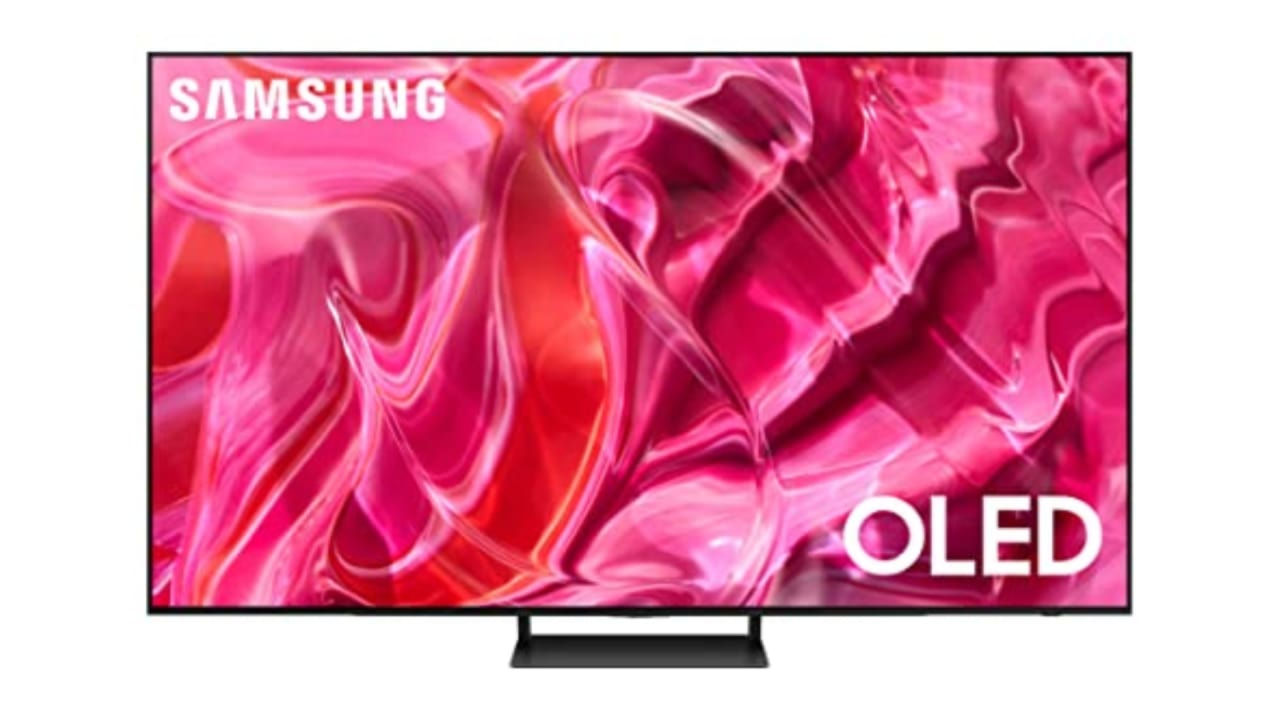These days, one of the best TVs for gaming aren’t a lot totally different from one of the best TVs you should purchase as a complete. If you happen to’re hoping to make your PlayStation 5 or Xbox Series X/S video games look their greatest on the large display screen, although, there are a couple of key options to look out for. No one must splurge on an ultra-high-end set simply to take pleasure in a online game, in fact, however that will help you get probably the most out of your greenback, we’ve laid out a couple of key ideas for purchasing a superb gaming TV under. We’ve additionally highlighted a couple of well-reviewed examples which can be out there now, whether or not you’re on a finances or prepared to pay a premium.
What to search for in a gaming TV
Whether or not you utilize it for gaming or not, all good TVs are constructed on the identical foundations. You desire a 4K decision, high-enough brightness to beat glare and make HDR content material pop, a comparatively excessive distinction ratio with deep and uniform black tones, colours that discover the suitable stability between accuracy and saturation and broad viewing angles. For video video games particularly, you desire a TV with minimal enter lag and quick movement response, with no blur or different undesirable artifacts behind quick-moving objects. After all, discovering a set that does all of this properly and suits into your finances may be tough.
OLED and LCD
For now, high OLED TVs typically supply one of the best image high quality for gaming or in any other case. However good OLED units normally value greater than their LCD counterparts, and a few fashions might not get vibrant sufficient for individuals who have their TV set in a very vibrant room.
Extra particularly, trendy OLED TVs might make the most of various kinds of OLED show tech: WOLED (i.e., “White OLED”) or the newer QD-OLED. We gained’t dig too deep into how the two diverge in panel composition and subpixel construction, however the simplified model is that QD-OLED shows use a layer of quantum dots (therefore the “QD”) to ship a wider gamut of extra vibrant colours and better total brightness than conventional WOLED units.
This doesn’t imply all QD-OLED TVs are inherently higher: How properly a person set performs is extra necessary than the panel it makes use of, and a few premium WOLED TVs just like the LG G4 make the most of a brand new type of show tech referred to as Micro Lens Array (MLA) to enormously enhance brightness themselves. These may be higher at retaining colours pure within the face of reflections as properly. And nearly all OLED TVs share the identical core strengths. However nearly as good QD-OLED units have come down in value, they’ve began to appear to be the standout for these trying to stability worth and superior image high quality.
If you happen to go for an LCD TV— whether or not to save lots of money or stick in room with poor gentle management — a sophisticated backlight with smaller and extra exact mini LEDs and efficient full-array local dimming will normally enhance distinction and lighting element. Many of those TVs, together with some budget-level fashions, additionally use quantum dots to reinforce colours. They normally aren’t as vivid or quick in movement as the highest OLED units, however they’re typically brighter and extra inexpensive, and one of the best can nonetheless produce a superb picture in their very own proper.
HDMI 2.1
To get probably the most out of a PlayStation 5 or Xbox Collection X/S, your TV ought to have full HDMI 2.1 help. That is the most recent main replace to the HDMI spec, enabling the next most bandwidth — 48 gigabits per second, up from HDMI 2.0’s 18 Gbps — and a handful of options which can be helpful for gaming efficiency particularly. These embrace variable refresh charge (VRR) and automated low latency mode (ALLM), which we element additional under.
Past that, maybe the chief perk of HDMI 2.1 is its skill to transmit sharp 4K video as much as a 120Hz refresh charge with trendy consoles just like the PS5 and Xbox Collection X, or as much as 144Hz with a strong gaming PC. Not each PS5 or Xbox Series X/S sport helps body charges that prime — and a few solely do at decrease resolutions — however people who do will feel and look particularly fluid in movement. HDMI 2.1 additionally contains help for Enhanced Audio Return Channel (eARC), which lets you move higher-quality lossless audio from a supply machine related to the TV to a suitable soundbar or receiver.
The extra full HDMI 2.1 ports your TV has, the higher. “Full” is the important thing phrase there. As reported by TFT Central, as a result of HDMI 2.1 is backwards suitable with HDMI 2.0, TV and monitor producers have been allowed to model HDMI ports as “HDMI 2.1” even when they lack full (or any) help for the spec’s upgraded options. We suggest a couple of TVs under which have true HDMI 2.1 ports, however for those who’re shopping for a brand new TV for gaming, make sure that your chosen set isn’t making an attempt to cover any capabilities you could contemplate important.
HDR — Excessive Dynamic Vary
HDR refers to a TV’s skill to show a wider vary between the darkest and brightest elements of an image. This broader vary can carry out particulars that might in any other case be lacking on a typical dynamic vary (SDR) TV, in each the very darkish and (particularly) very vibrant areas of a picture. HDR sometimes comes with an enchancment to paint replica as properly, displaying a bigger palette of extra vibrant colours that brings content material nearer to its creator’s unique imaginative and prescient.
To get an HDR image, you want each content material that’s mastered to benefit from the tech and a TV able to displaying that content material. HDR additionally is available in quite a lot of codecs, that are typically cut up between people who make the most of static metadata (e.g., HDR10) and people who make the most of dynamic metadata (e.g., HDR10+, Dolby Imaginative and prescient). In brief, the latter permits a TV to optimize its brightness and colours on a per-scene and even per-frame foundation, whereas the previous makes use of one set of optimized settings for the whole thing of the given content material. Assist for these codecs can differ relying on the TV, content material and sport console you utilize. The Xbox Collection X and S, for instance, help Dolby Vision for gaming, whereas the PS5 doesn’t.
The excellent news is that the majority TVs you’d purchase in 2023 are HDR-ready in some vogue, even on the finances finish of the market. The catch is that some TVs are significantly better at getting probably the most out of HDR than others. The identical goes for precise content material mastered in HDR. With video video games specifically, there aren’t fairly as many titles designed to benefit from HDR as there are films (although the quantity is rising on a regular basis), and the variance in HDR high quality tends to be wider.
HGiG — HDR Gaming Curiosity Group
HGiG stands for the HDR Gaming Interest Group. Sony and Microsoft are each members, as are many TV makers and sport builders. What this implies is that, ideally, all of the teams talk data to be able to begin up a brand new sport on a console or PC and have it mechanically acknowledge your show. As soon as that occurs, the sport can alter the inner settings to regulate for that show’s capabilities and provide the greatest image high quality potential, with out dropping particulars within the brightest or darkest areas of the display screen. For instance, daylight on the finish of a darkish tunnel might painting a brightly lit surroundings as an alternative of trying like an overexposed white blob.
It is a good factor, however the actuality is a little more sophisticated. Not all TVs spotlight HGiG compatibility of their settings menu, whereas just some PlayStation and Xbox video games acknowledge and comply with the rules. If an HGiG possibility is listed in your TV’s tone mapping settings, you need to flip it on previous to operating the console’s HDR settings. Then, for those who’re enjoying a sport that helps HDR and HGiG, you ought to be in good condition with out having to regulate the varied luminance ranges once more. Nonetheless, how all of this seems to you would possibly differ relying in your TV and the sport you’re enjoying. House owners of sure LG OLED TVs, for example, might desire their TV’s Dynamic Tone Mapping setting. Use no matter settings you assume look greatest.
ALLM — Auto Low Latency Mode
ALLM permits a supply (like your PS5 or Xbox) to inform the show to modify into an image mode that reduces lag between receiving every body of a picture and displaying it on the TV. This cuts out extra processing that may very well be the milliseconds of distinction between touchdown a exact enter or not. A very good trendy TV can mechanically swap to sport mode, then again out while you’d fairly watch a film or TV present.
VRR — Variable Refresh Charge
VRR will sound acquainted for those who’re a PC gamer. Most gamers have skilled slowdown, display screen tearing or stuttering as a system struggles to render every body on the goal velocity, which is mostly 30 or 60 fps on a TV. With VRR, every little thing stays in sync: Your show will not present the subsequent body till it is prepared, which might make issues really feel smoother and extra responsive, even when the system fails to ship on its goal body charge.
There are a couple of totally different implementations of VRR out there, together with Nvidia’s G-Sync, AMD’s FreeSync and the HDMI Discussion board’s VRR spec, which is a part of the complete HDMI 2.1 customary. Each a TV and an enter machine have to help the identical VRR tech for it to work, and totally different gadgets might solely help VRR inside a particular refresh charge window. On a 120Hz show, for example, the PS5’s VRR solely works between 48Hz and 120Hz.
As a reminder, the PS5 supports HDMI Discussion board VRR, the Xbox Collection X/S help HDMI Discussion board VRR and FreeSync, whereas gaming PCs might help G-Sync or FreeSync relying on whether or not they use a Nvidia or AMD graphics card. An excellent gaming TV helps all the large VRR codecs, however lacking, say, G-Sync, isn’t a killer for those who solely sport on a PS5 or Xbox.
8K (You do not want it)
One factor you don’t want to fret about is 8K help. Though the PS5 and Xbox Collection X are technically able to outputting 8K video, only a few video games are made for that decision, and 8K’s sensible advantages are extremely minimal until you propose on sitting unreasonably shut to an enormous TV. The few 8K TVs available on the market are additionally very expensive.
Good gaming TVs you may get proper now
There’s by no means an ideal time to purchase a brand new TV. Costs on present fashions are all the time dropping, and subsequent 12 months’s upgrades are all the time simply across the nook. But when we needed to slender it down, the greatest occasions to pounce can be proper round Black Friday — after we normally see larger-than-usual reductions on the latest units — and in the course of the late spring to early summer time interval, when final 12 months’s fashions steadily drop in value as producers filter out stock.
As of this writing, we’re in the course of the latter. The likes of Samsung, LG, Sony, Hisense and others have not too long ago began to promote their new TVs for 2024, so lots of the higher units from 2023 are within the technique of being phased out. For now, grabbing a kind of older fashions whereas they’re nonetheless out there and on sale ought to get you probably the most bang for the buck. Whereas we at Engadget don’t formally evaluation TVs, we’ve researched the market and rounded up a couple of units which were broadly well-reviewed by different skilled evaluation websites we belief, together with Rtings, Wirecutter, Reviewed and PCMag, amongst others.
Display screen sizes: 55″, 65″, 77″, 83″ | Show sort: QD-OLED | Decision: 4K | Most refresh charge: 144Hz (120Hz on 83″) | HDR codecs: HDR10, HDR10+, HLG | HDMI ports: 4x HDMI 2.1 | VRR: HDMI Discussion board VRR, FreeSync Premium, G-Sync suitable | Sensible OS: Tizen | Display screen type: Flat | ALLM: Sure | TV tuner: ATSC 3.0
The Samsung S90C has a QD-OLED show that mixes an OLED panel with a layer of quantum dots. This permits it to show the excessive distinction and deep blacks of any good OLED TV with out sacrificing as a lot in the way in which of peak brightness or colour saturation. It ought to ship persistently clean movement, and it has 4 HDMI 2.1 ports that may play as much as 4K 144Hz. It additionally helps HDR10 and HDR10+, ALLM and the most important VRR codecs. Sizes vary from 55 to 83 inches. Like the remainder of Samsung’s TV lineup, nonetheless, it doesn’t work with Dolby Imaginative and prescient HDR.
We’ll additionally be aware the Samsung S95C, a higher-end mannequin. It, too, can play in 4K as much as 144Hz, and a few reviews say it may possibly get a bit brighter than the S90C in HDR. Because it runs its ports via an exterior field, its precise {hardware} is thinner as properly. However it prices a couple of hundred {dollars} extra, so it’s tougher to justify until cash isn’t any object.
Samsung has launched the 2024 model of the S90C, the S90D. Nevertheless, the corporate is promoting it with both QD-OLED and lesser WOLED panels relying in your nation and chosen dimension. In North America, the 55-, 65- and 75-inch fashions nonetheless use the superior QD-OLED show, however the remainder might lose a number of the elements that make the TV stand out within the first place. Provided that the QD-OLED model doesn’t look like greater than a minor improve within the first place, it’s onerous to completely suggest proper now.
The brand new Samsung S95D, in the meantime, is notable for having a matte end, which appears to assist it cut back glare. It’s far dearer than the S95C as of this writing, although.
Past Samsung, the Sony A95L is one other QD-OLED TV that’s received practically universal praise, with many reviewers saying it tops any various from Samsung or LG. It’s technically a 2023 mannequin, however Sony will continue to sell it via 2024. However it’s one other tremendous costly one — a 55-inch mannequin at present prices $2,800 — and it solely has two HDMI 2.1 ports, one in every of which is the eARC port you would possibly want for a soundbar or receiver. That makes it a bit much less handy if you wish to hold a number of consoles attached without delay.
- Excessive distinction with deep blacks
- Good brightness for an OLED TV
- Obtainable in sizes as much as 83 inches
- Would not help Dolby Imaginative and prescient HDR
Display screen sizes: 42″, 48″, 55″, 65″, 77″, 83″ | Show sort: WOLED | Decision: 4K | Most refresh charge: 120Hz | HDR codecs: Dolby Imaginative and prescient, HDR10, HLG | HDMI ports: 4x HDMI 2.1 | VRR: HDMI Discussion board VRR, FreeSync, G-Sync licensed | Sensible OS: webOS | Display screen type: Flat | ALLM: Sure | TV tuner: ATSC 1.0
The panel can’t get as vibrant as a QD-OLED TV just like the Samsung S90C, however it nonetheless performs excellently by way of distinction, enter lag, movement response and viewing angles. It’s often out there for a little bit bit lower than the S90C, too. It follows the HGiG’s HDR tips, helps ALLM, works with all the most important VRR codecs and has 4 full HDMI 2.1 ports able to outputting 4K 120Hz with a PS5, Xbox or PC. It additionally helps all the most important HDR requirements, together with Dolby Imaginative and prescient, and it’s out there in all kinds of sizes, from to . If the S90C runs out of inventory, it’s a nice various. It’s only a bit much less color-rich, and it doesn’t help a 144Hz refresh charge for individuals who might need to get probably the most out of a gaming PC.
The brand new provides 4K/144Hz help for PC gamers, and it ought to carry a slight improve in total brightness and colour efficiency. Once more, although, it prices a superb bit extra proper now, so most individuals are higher off saving money with the older model.
- Excessive distinction with deep blacks
- Dolby Imaginative and prescient HDR
- Obtainable in sizes as much as 83 inches
- Not as vibrant as high QD-OLED TVs
- Would not help 144Hz refresh charges for PCs
Display screen sizes: 43″, 50″, 55″, 65″, 75″, 85″ | Show sort: QLED with mini-LED backlight (VA panel on 43″ and 50″, ADS panel on 55″ and up) | Decision: 4K | Most refresh charge: 120Hz (144Hz on 43″ and 50″) | HDR codecs: HDR10, HDR10+, HLG | HDMI ports: 4x HDMI 2.1 | VRR: HDMI Discussion board VRR, FreeSync Premium Professional, G-Sync suitable | Sensible OS: Tizen | Display screen type: Flat | ALLM: Sure | TV tuner: ATSC 3.0
If you happen to want the improved brightness of a LCD TV, or for those who assume you would possibly play one sport (extraordinarily) lengthy sufficient to fret about burn-in, contemplate the Samsung QN90C. It may well’t match the distinction, response time or viewing angles of a superb OLED mannequin, and Samsung’s Tizen software program isn’t the cleanest. However the QN90C’s mini-LED backlight and quantum-dot colour ought to make for a richer picture than most LCD TVs, notably in HDR. Its movement and enter lag shouldn’t trigger issues both, and it will get brighter than the OLED TVs talked about above. It nonetheless doesn’t help Dolby Imaginative and prescient, however it has 4 full HDMI 2.1 ports, ALLM and all the large VRR codecs. It additionally is available in a number of display screen sizes, with the 43- and 50-inch fashions able to hitting a 144Hz refresh charge. The remainder go as much as 120Hz, which is the max for a PS5 or Xbox Collection X/S. The 43- and 50-inch variations of those TVs use VA panels, although, which ought to lead to higher distinction however worse viewing angles.
The 2024 model of this set is, you guessed it, the QN90D, and it guarantees improved distinction and brighter highlights. However it prices about $1,000 greater than the QN90C proper now relying on the scale, and its upgrades don’t appear to be almost value that a lot.
The Sony X93L is another highly-rated premium LED TV that does help Dolby Imaginative and prescient, albeit at 60Hz solely, plus it may possibly auto-calibrate HDR on a PS5. It has two fewer HDMI 2.1 ports than the QN90C, nonetheless, which makes it a tighter match for these with a number of gaming gadgets. Its sizes additionally begin at 65 inches. The identical HDMI port restriction applies to the brand new Sony Bravia 7, which is successfully the X93L’s alternative for 2024, and Bravia 9, a flagship mini LED TV that seems tremendous for vibrant rooms primarily based on early opinions however at present begins at a hefty $3,000.
- Mini-LED backlight and quantum-dot colour
- Excessive peak brightness
- Obtainable in wide selection of sizes
- Would not help Dolby Imaginative and prescient HDR
- Cannot match the distinction of an OLED TV
- Smaller fashions use worse panels
Display screen sizes: 55″, 65″, 75″, 85″, 100″ | Show sort: QLED with mini-LED backlight (ADS Professional panel on 75″, VA panel on others) | Decision: 4K | Most refresh charge: 144Hz | HDR codecs: Dolby Imaginative and prescient, HDR10, HDR10+, HLG | HDMI ports: 2x HDMI 2.1, 2x HDMI 2.0 | VRR: HDMI Discussion board VRR, FreeSync Premium Professional, G-Sync suitable | Sensible OS: Google TV | Display screen type: Flat | ALLM: Sure | TV tuner: ATSC 3.0
The TVs above are all fairly costly. If you happen to’re on extra of a finances, the Hisense U8K, one other QLED TV with mini LEDs, ought to be a robust worth. It is probably not a greater gaming TV than the QN90C in a vacuum, because it solely has two full-fat HDMI 2.1 ports, and its picture will wash out extra dramatically when considered from an angle. However reviews suggest that, for a couple of hundred much less, it’ll nonetheless look good in any lighting surroundings, with spectacular brightness ranges, 4K 144Hz help, all the principle HDR codecs, VRR, ALLM and low-enough enter lag in sport mode. You’ll nonetheless sacrifice distinction in comparison with a superb OLED TV, nonetheless, and movement gained’t look fairly as quick or clean.
Hisense’s up to date mannequin for 2024 is the U8N. This ups the distinction, brightness and response occasions based on initial reviews however could also be much less color-accurate than higher-end LED TVs out of the field. If the U8K goes out of inventory or the U8N is priced in the identical ballpark (however nonetheless prices lower than the Samsung QN90C), it ought to be a protected alternative.
The TCL QM8 looks to be a powerful QLED possibility on this value vary as properly. It may well get a little bit brighter than the U8K and helps as much as a 144Hz refresh charge in 4K or a super-fast 240Hz in 1080p. In contrast to the U8K (however not U8N), it additionally retains its eARC port separate from its two HDMI 2.1 ports, which implies you would hold a PS5, Xbox Collection X and eARC-compatible soundbar attached and optimized with out ever having to fiddle with inputs. Its smallest dimension is 65 inches, although, and some opinions say it’s a bit worse than the U8K at upscaling lower-resolution content material, which can have an effect on these trying to play retro consoles. TCL has launched a new QM8 model for 2024, although we haven’t seen sufficient suggestions to say if it’s value contemplating simply but.
- Robust worth
- Spectacular brightness
- 4K 144Hz help
- Distinction is not nearly as good as that of an OLED TV
Display screen sizes: 55″, 65″, 75″ | Show sort: QLED with mini-LED backlight | Decision: 4K | Most refresh charge: 60Hz | HDR codecs: Dolby Imaginative and prescient, HDR10, HDR10+, HLG | HDMI ports: 4x HDMI 2.0 | VRR: HDMI Discussion board VRR, FreeSync suitable, G-Sync suitable | Sensible OS: Google TV | Display screen type: Flat | ALLM: Sure | TV tuner: ATSC 1.0
On the decrease finish of the value spectrum, the Hisense U6K is the uncommon budget-level TV with quantum-dot colour, a mini-LED backlight and full-array native dimming. Various reviews say all of this helps it ship higher distinction and colour quantity than most value-oriented fashions. ALLM and the most important HDR requirements are supported as properly. Technically, it’s additionally a VRR show — however, like many cheaper TVs, the U6K is restricted to a 60Hz refresh charge, in order that help solely goes up to now. There are not any HDMI 2.1 ports both, and the TV’s brightness ranges and movement dealing with will nonetheless be a transparent step down from dearer choices. However at $350 or so for a 55-inch mannequin, these points ought to be simpler to miss.
If the U6K turns into completely unavailable, the newer Hisense U6N is out now and seems comparable on the spec sheet, although there aren’t any opinions out for it as of this writing.
The TCL Q5 is one other notable finances possibility, because it’s one of many few low-cost TVs that may play as much as 120Hz, albeit solely at a 1080p or 1440p decision. It lacks an area dimming characteristic and the U6K’s mini- LED backlight, however for competitive-minded players who’re prepared to commerce some sharpness and movie high quality for a extra responsive picture, it may very well be an honest worth. The identical sentiment ought to apply to the TCL Q6, which affords barely increased brightness ranges however prices a bit additional. There are updated versions of these sets for 2024 as properly, together with one finances line, the Q68 series, that does embrace full-array native dimming. However once more, precisely how a lot of an improve these are nonetheless stays to be seen..
- Inexpensive
- Mini-LED backlight
- Quantum-dot colour
- Restricted to 60Hz refresh charge
- No HDMI 2.1 ports
Richard Lawler contributed to a earlier model of this report.
Trending Merchandise

Cooler Master MasterBox Q300L Micro-ATX Tower with Magnetic Design Dust Filter, Transparent Acrylic Side Panel, Adjustable I/O & Fully Ventilated Airflow, Black (MCB-Q300L-KANN-S00)

ASUS TUF Gaming GT301 ZAKU II Edition ATX mid-Tower Compact case with Tempered Glass Side Panel, Honeycomb Front Panel, 120mm Aura Addressable RGB Fan, Headphone Hanger,360mm Radiator, Gundam Edition

ASUS TUF Gaming GT501 Mid-Tower Computer Case for up to EATX Motherboards with USB 3.0 Front Panel Cases GT501/GRY/WITH Handle

be quiet! Pure Base 500DX ATX Mid Tower PC case | ARGB | 3 Pre-Installed Pure Wings 2 Fans | Tempered Glass Window | Black | BGW37

ASUS ROG Strix Helios GX601 White Edition RGB Mid-Tower Computer Case for ATX/EATX Motherboards with tempered glass, aluminum frame, GPU braces, 420mm radiator support and Aura Sync

CORSAIR 7000D AIRFLOW Full-Tower ATX PC Case – High-Airflow Front Panel – Spacious Interior – Easy Cable Management – 3x 140mm AirGuide Fans with PWM Repeater Included – Black










